A Guide to Crypto Trading Psychology: Mastering the Market in 2024:
Most new crypto traders don't consider learning about crypto trading psychology. Perhaps they think it unnecessary and a bit "fluffy." However, understanding the neuroscience of trading behaviour may not seem macho, but overcoming the survival brain takes considerable effort. In fact, the majority of successful trading veterans of any asset will likely echo a similar sentiment that psychology is among the most important aspects that separates non-successful from successful traders.
Moreover, our brain lets us down when we try to navigate the trading process; It can be financially and mentally unrewarding until you take steps to become aware of and manage the impact of emotions on crypto trading.
Understanding The Importance Of Trading Psychology
Before anything you learn about crypto trading, understanding trading psychology is essential to improving your trading results.
When you are trading, you are battling the survival brain. Until you have mastery of your emotional responses, it is almost impossible to make consistent profits, manage risk and become a disciplined trader.
You may think you are different to the 95% of crypto traders that fail. You are, after all, an intelligent, rational person and in control of your emotions. Well, I've been there, done that and got the T-shirt. In this article, I will help you understand the importance of trading psychology for a successful crypto trading career. In conclusion, you will have powerful tools to help you navigate the crypto market like a pro.

Your Crypto Trading Psychology Guide: Jan's Experience And Qualifications
In 2018, I began my trading journey. I'm one of those annoyingly diligent people who spends every spare moment learning about a new subject. I was determined to master the trading process and learn from professionals.
I became a technical analysis ninja, easily able to read trading charts and assess support and resistance and areas of market sentiment. I opened a demo trading account with a realistic $3,000 of pretend money.
From day one, I nailed it. Every day, I made a profit. I traded sensibly and only risked 1% of my account and, within three months, doubled the $3,000. I was ready, or so I thought.
I opened a live trading account and mentally prepared myself to risk my money. For the first few months, it went okay. I made small daily profits. Then, one day, I got caught with economic news and lost a few trades. The loss affected me more than I expected, but I moved on.
Unfortunately, that incident seemed to fire off a negative spiral. I made one poor trading mistake after another as my emotions spun out of control. I recall one loss of $8 that caused me to sit weeping in front of the screen. Crazy.
Within six months, I'd lost 40% of my account. I started risking more, trying to reclaim the losses, but nothing worked. This is often referred to as revenge trading, which is always a bad idea as you are making decisions based on emotion and anger, not rational logic. This is the desperate gambling equivalent of “I just need one more hand" or "just one more spin to win my money back” in a casino.
It's a long story, but to cut to the chase, after watching many hours of trading psychology videos, I knew I had to back off and reassess or risk losing my entire trading balance. After that, I stopped trading and began studying Applied Neuroscience with Dr Sarah McKay of the Neuroscience Academy.
Dr McKay has no trading experience, but that didn't matter; I wanted to understand how the brain worked to identify the mental triggers that caused my weird behaviour when trading. The certificated course was a revelation, with so many "ah ha" moments.
The overriding message was that our brain hasn't evolved since the Stone Age. Our survival brain is twice as reactive to losing as it is to gain. That is why 95% of crypto traders lose and why it is essential to understand trading psychology to become a mentally disciplined trader.
I'll end my story here because this comprehensive trading psychology guide is for you to become a better trader. However, my final note is that it took a few months to integrate my learning when I returned to trading. After that, a new calm evolved. I stopped being attached to winning and losing, could remain objective, and steadily grew my trading account.
This trading psychology guide combines my trading experience, crypto knowledge and expertise in neuroscience to help improve your chances of becoming a successful cryptocurrency trader.
Part I: Key Concepts of Trading Psychology
Defining Trading Psychology
"Trading Psychology" covers a spectrum of things to master when trading. This section will take a quick peek at the things that prevent your crypto trading success and how to overcome them.
- Discipline
- Patience
- Decisiveness
- Confidence
We each have a different trading personality, which affects our market approach. Some are aggressive and confident, and others are more hesitant and less decisive. However, even the most rational and confident person can become emotionally wrung out from trading.
Let's look at the underlying components of trading personality and how you can improve your chances of success.
Trading Discipline
When you're ready to trade, you will have a set of rules and strategies to underpin your trading, such as the following: -
- Create a trading plan
- Trading strategies
- Risk management
- Always have a stop-loss
- Trade exit and entry points
- Not holding onto losing trades
- Lot size aligned with your trading capital
- Taking profit instead of grasping for more
- Sticking to a reasonable risk-to-reward ratio (RTR) (such as 1:3)
- Always spend 30+ minutes analysing the crypto market before trading
How to Develop Trading Discipline
Create a trading plan and stick to it 100%. Adjust over time and assess daily how you performed according to your plan, NOT how many trades you won or lost. The objective is to become a better crypto trader because, ultimately, that will give you trading longevity in the future.
Patience
Impulsivity is a trading error that catches new traders and is a primary reason for losses. Trading can become addictive, and there's an urge to be "in the market" as often as possible.
Traders who can delay gratification, and take fewer trades, do far better than those who cannot.
How to Develop Trading Patience
Firstly, accept that there is always another trade. You won't miss out if you don't get the big market moves. Secondly, create a strict risk management strategy, and do not enter the market unless you can tick every box for assessing risk.
Practice closing losing trades and use a trailing stop loss if the open trade is profitable. Sit on your hands, take a walk or do anything to break the emotional impulse to trade when there is no trade.
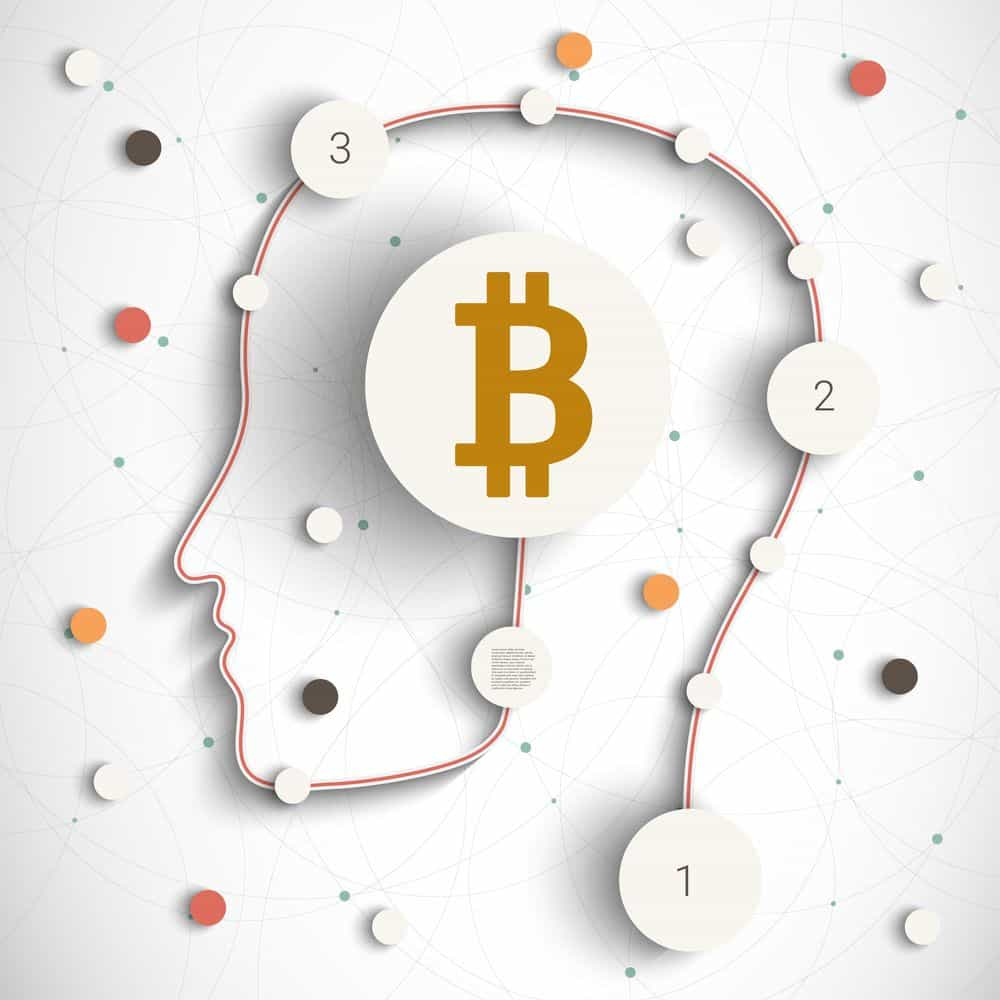
Trading Decisiveness
Even if you are decisive in your daily life, you may discover indecisiveness when trading. Instead of trusting technical analysis and a rational approach to trading, you may follow a gut instinct about trades. The problem with this approach is that sometimes you may be right. As a result, you now have confirmation bias (more on that later) and think using your gut works out fine and dandy.
If you've had a few losses, indecisiveness worsens, and you hold back from potentially profitable trades. In hindsight, you cannot understand why you felt like a deer in the headlights, which dents your confidence.
How to Improve Trading Decisiveness
It's essential to have a clear trading strategy with rules. Before opening a new position, you will know the following: -
- The exact market signals that align with your strategy
- Entry and exit points (when and why)
- If the market suddenly changes, what decisions will you make
If you genuinely struggle with decisiveness, automating your trades is one way to overcome that. After market analysis, set a pending order (with stop loss) at a predetermined entry and exit price and go out for a coffee. Be firm about not interfering with the trade and let it run.
If trading automation is a subject you would like to learn more about, feel free to check out our following articles:
Instead of relying on auto trading bots and algorithms, you can also look into Copy Trading where you can learn from and copy the trades of highly skilled and often professional traders. Our top pick for crypto copy trading platforms is Bitget, while eToro is the better platform for users looking to copy trade from traders who trade traditional assets.
Trading Confidence
Confidence comes with experience and understanding that successful crypto trading is not about how many wins you have. After several losses, you lose confidence, and you stop trading or start taking considerable risks.
Professional traders may have a low win rate but often have a high risk-to-reward ratio (RTR), such as 1:5, meaning their win will be five times more than the loss. This means that a $10 trade would win $50 leading to one win covering five potential losses.
New traders often make the mistake of risking 1:1, which is a guaranteed failure long-term. Many experienced traders will make the comparison to a casino, where the house has say a 51% success rate, leaving the gambler with a 49% success rate. Simple statistics tells us that, over time, the house will win, which is how casinos remain profitable. A gambler will never come out profitable in the long with a 49% success rate risking the same as they stand to win with a 1:1 ratio.
Retail traders are, in fact, at a disadvantage. Right off the bat, the broker/exchange is taking a trading fee or their cut (called a spread) meaning your trade is already starting at a net negative in terms of profit. This means that a 1:1 RTR is already, not technically, a 1:1.
Retail traders are also often trading against investment firms and institutions with access to a team of analysts, resources, tools and “insider knowledge” that retail traders cannot access, leaving us at another disadvantage, which is why we are often referred to as “dumb” money. An interesting example of how “dumb” money is manipulated by firms and institutions is by a method known as the Wyckoff Method, this is just one of many examples.
This is why it is crucial to have a higher than 1:1 RTR ratio. Many novice traders are surprised to find out that some very successful traders only have a 20% win rate, but if your RTR is suitable, winning 20% is all you need.
How to Improve Trading Confidence
Accept that you will lose. That's part of the "game." Successful trading is not about avoiding losses because that is impossible for even the most experienced traders.
Divert your focus to process goals. Commit to daily improvement in your trading skills, and your confidence will increase as you see the results.
We recommend trading with a demo account for several months, so you can work on backtesting strategies and creating a trading plan. In addition, if live trading knocks your confidence, use your demo account to rebuild your skills.
We'll close this section with a snippet of interesting information. Pilots make better traders than lawyers. Why? That doesn't make sense. Aren't lawyers rational and critical thinkers?
Yes, that's true.
However, pilots learn how to manage emotions with simulated flights when training to fly. Repeatedly, they crash planes in the simulation until they burn out and leave, or they master their emotions to become calm, clear-thinking pilots able to manage risk.
Part II: Emotional Management in Trading
Emotions create physiological changes in the brain and body. The nervous system automatically reacts to stimuli, and we have a physical reaction. When we cannot control or aren't aware of our emotions, it can lead to unpleasant scenarios.
The Dangers of Emotional Trading: From Revenge Trading to Panic Selling
Emotional trading kills accounts, and getting caught in the cycle will ruin your enjoyment of trading.
An experienced trader once told me, "Jan, the market does not care about you." It took me a few years to understand what he meant. Sometimes, it may feel like you're acting like a lunatic, taking reckless trades, revenge trading after losses and becoming angry at the crypto market.
Retail traders do not influence market prices, but if a crypto whale or an institution suddenly withdraws $3 million of Ethereum (ETH), it will hurt, and you can do nothing. You likely have no idea why the market suddenly changed and cannot make an informed decision.
At times like that, novice traders get angry or frustrated. They start panic buying or selling and trying to second-guess what the market will do next.
When it's all over, and you stop trading, you feel like an idiot. Caught in the rush of emotions, you've wiped out a big chunk from your account. You vow it won't happen again, but it does many times. After a while, you lose trust in your ability to act rationally, and that causes all sorts of knock-on effects, such as lost confidence and inability to make decisions.
This section helps you understand the emotions that can affect your trading results and provides suggestions to help you improve your emotional responses.
Emotional Awareness: Recognising Your Emotions
You may feel fearful, and the amygdala triggers the fear response. You start sweating or holding your breath. Your hands clench, your heart rate increases, your muscles tense, and you lean towards your laptop as you watch your trade plummeting into a loss.
All of the above happens without your awareness. Once you become aware of the physiological changes and know how to manage your emotions, you can better master crypto trading.
The 5 most common emotional responses to trading are: -
- Fear
- Greed
- Hope
- Frustration
- Boredom
This section explores the five emotional responses with guidelines for managing them.
Fear
We are twice as reactive to losing as we are to winning. We will twist ourselves into a pretzel to avoid loss, which is when problems arise in trading. Experienced traders learn to manage the fear response from years spent trading. However, it often comes as a surprise to new traders.
The problem is that fear is a physiological response that clouds rational judgement and puts the brain in fight or flight mode.
When fearful, you are more likely to impulse or revenge trade, close a trade too early or too late. It can also prevent you from executing a market for fear of being “wrong.”
Many professional traders tell stories of blowing numerous trading accounts, feeling deflated and wanting to give up. It can take years to develop the trading mindset, which isn't sexy.
So many adverts from supposed "trading gurus" taunt you with stories about making $5k daily in your first month. I'll tell you now; there is more chance of you riding a pink unicorn to the moon than making consistent trading profits from the get-go.
It is hard work to develop your trading skills. When you embrace that fact and give yourself the time to master trading psychology, you are way ahead of most novice traders. In addition, you will likely get there quicker too.
How to Manage Fear
It's tricky to overcome the emotional response to fear. However, preplanning is the secret to success: -
- Learn technical, fundamental and sentiment analysis: Some traders use all three forms of analysis, and others prefer one or two methods. Either way, it can help you make rational decisions.
- Practice deep breathing: Deep breathing slows down the fear response.
- Step away from the charts: Watching a trade stimulates dopamine, which can trigger fear and excitement.
- Automate trades: After analysis, submit a pending order for a predetermined price point and walk away. Always follow rule #3.
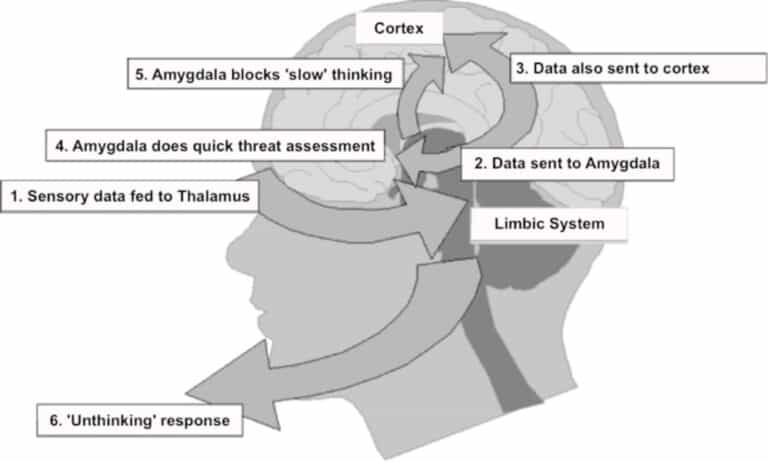
Greed
Your trade is showing a profit. You're a pip or two from your predetermined exit and, instead, you move it, hoping for a bit more profit. Then, dang, the market suddenly reverses, and your profit shrinks. You hold on, hoping it will swing back, but it doesn't.
Another greedy habit is having too many trades open simultaneously, hoping to make a big profit. You become blind to the fact that you're risking more than 1% of your account and become emotionally attached to the win.
Greed affects your decisions. You take bigger lot sizes, add positions to winning trades and forget about the risks.
How To Manage Greed
Create a risk management plan, and do not deviate from the rules.
A second rule is to stop watching your trades. The chances of impulse trading are high because your brain becomes addicted to the thrill of trading. It is common for traders to set their stop loss and take profit levels as predetermined by their analysis and risk management plan and walk away once the trade is placed and allowing to play out. This helps avoid the temptation to micromanage the live trade and let fear or greed disrupt your risk management plan.
Additionally, have a high risk-to-reward ratio. As mentioned earlier, it's an excellent way of taking fewer trades and becoming more profitable.
Hope
New traders are overly optimistic about their trading. Here are three typical scenarios: -
- You hold onto a losing trade, hoping the market will reverse.
- You add more positions to a winning trade to make more profit.
- You change the exit point of a profitable trade hoping for more profit.
All three of the above will eventually damage your account.
How to Stop Hope from Affecting Your Decisions
Before making a trading decision, I learned to ask myself, "What would a professional trader do?" They do not rely on hope but treat trading as a serious career, not a game.
Set realistic trading goals and focus on the process rather than the result. Never, ever rely on hope. Learn to cut your losses early and wait for a market signal aligned with your trading plan.
Frustration
Frustration is one of the most annoying emotions we experience when trading. You may find yourself yelling at the screen at a market that cannot hear you and doesn't care about you.
The trouble is, we think the crypto market acts logically, and nothing could be further from the truth. It does not follow a linear pattern. Trends do not ascend or descend in a straight line, and one tweet from an influencer can crash the market in a few seconds.
You will sometimes feel frustrated because you're a normal human being. I wish I'd known that. It's much easier to manage your emotions when you understand what you're dealing with.
How To Manage Frustration
You're unlikely to feel frustrated if you grow your trading account daily, with profits consistently exceeding losses. Therefore, managing your losses by setting stop losses and having a high risk-to-reward ratio makes sense.
Accept that occasionally frustration may happen but try to remain detached and curious about the experience.
Boredom
You may not anticipate boredom as part of the trading process, but it happens.
Sometimes, the crypto market consolidates, which can last for months. There's no price movement and, subsequently, few opportunities for trading. If you've become addicted to the dopamine rush of having open trades, you're likely to feel bored.
What happens next is you start creating trades where none exist. Professional traders often tell us they became successful when they could remain detached from market activity. When the market lulls, they find other things to do because they know from experience that trading, for the sake of it, leads to loss.
How To Prevent Impulsive Trading From Boredom
Think of a quiet market as an opportunity to use the time to practice your trading skills with a demo account. Try developing new strategies, fine-tuning your trading plan and building your demo account with a good risk management plan.
Emotional Control: Keeping Your Emotions in Check
Now you understand how powerfully your emotions affect your trading experience, what steps can you take to manage the emotional response?
Firstly, it's crucial to prepare for a trading session: -
- Assess your emotional state before trading: If you've just argued with your partner and are feeling unsettled, that's unlikely to be a good time to trade.
- Practice deep breathing: Before opening the charts, sit comfortably and breathe deeply. One method is to breathe in for a count of four and breathe out to a count of four until you feel relaxed.
- Check your trading plan: Print your plan and strategy. It can help to have a checklist. Ensure you know your goals, risk levels and entry and exit points.
- Meditate: Meditating might seem fluffy, but many professionals swear by it to help improve emotional balance and, subsequently, trading results. It can reduce your stress levels and calm your survival brain.
Another factor in becoming a profitable crypto trader is deciding when to trade. On average, we make around 35,000 decisions daily. The more decisions made, the more the quality of decisions deteriorates, leading to Decision Fatigue.
Therefore, it's beneficial to trade early in the morning when your brain is fresh. I made this mistake early on by sitting at my laptop the entire day watching the charts. Once I qualified in neuroscience, I changed my habits and spent no more than two hours analysing and taking trades in the morning.
Eventually, I reached a point where I would analyse charts on a Monday morning, pick my trades, set pending orders and not look at my trading account until Friday afternoon. That took over two years for me to achieve.
If there are no potential trades, refrain from allowing your mind to believe there are. Become a master of walking away and waiting until another day.
Managing your emotions can be one of the most potent components of mastering your trading and getting more positive results.

Part III: Common Psychological Traps in Trading
We experience hundreds of subconscious biases, and many can affect our trading decisions and results. A bias is a heuristic shortcut created by the brain to limit resources and make the decision process quicker. In reality, cognitive biases often blinker our thinking and not in a good way.
This section looks at five cognitive biases that influence traders' decisions. The trick is to uncover and challenge our biases instead of allowing the brain to decide without our rational input.
- Hindsight Bias: What happens after the trade closes.
- Confirmation Bias: The brain seeks confirmation of a belief.
- Overconfidence Bias: When Confidence Becomes Overbearing
- Loss Aversion: FOMO: The Fear of Losing Out
- Anchoring Bias: Stuck on the First Piece of Information
Hindsight Bias
Hindsight bias is one of the most frustrating trading experiences. For example, you see a potential buy trade for Ethereum (ETH) but decide not to enter the market. Later in the day, the Ethereum price increases by 20% and keeps going up. You kick yourself for not taking the trade because you "knew the price would rise." That's hindsight bias.
It's easy to be sure in hindsight. The problem arises when you fail to notice all the times you weren't right and start taking trades based on your (apparent) certainty.
Successful trading is not about being right. Unsuccessful trading isn't about being wrong. The trick to becoming a profitable trader is to master the trading process and remain detached about whether you are right or wrong. You can lose a good trade and win a lousy trade. The market decides, not us.
How To Prevent Hindsight Bias
It's an excellent idea to keep a daily trading journal. Keep notes about the trades you don't take as well as those you do, as well as the outcome of the trade.
Create a checklist in your journal for how you felt before, during and after taking a trade. List things like: -
- Confidence
- Certainty
- Fearful
- Relaxed
- Hopeful
At the close of the day, assess your emotional responses to the trades and measure them against weekly and monthly results. After several months, you should notice a pattern in your trading decisions.
Confirmation Bias
Everything the brain does is to protect resources. Confirmation bias can blind you to what is actually happening on the charts. For example, suppose Ethereum (ETH) has been trending upward for several months. You've done your technical analysis and are sure the trend will continue.
Suppose Ethereum (ETH) broke through a historical resistance point, and you're convinced you will surely profit from this trade. Then the price pulls back. You're not worried. It's a market correction. That happens.
The Ethereum (ETH) price, however, keeps descending. Now you're experiencing uncertainty but feel hopeful the price will reverse and ascend. It doesn't. You fail to cut your losses, and the trade closes.
Now you look at the charts and feel like an idiot. Why couldn't you see the price was reversing with some force back to a support zone? It's so clear now, but it's too late.
How to Overcome Confirmation Bias
One trick that helped me was to analyse the charts for a "buy" and a "sell" regardless of my initial opinion. Yes, this technique meant I took fewer trades because after looking at both options, it often appeared that either trade was viable.
When you make a decision, constantly challenge it, even if you feel confident. Confirmation bias hides the facts from our brains. Remain vigilant to complacency and overconfidence by not trusting what "feels" right and, instead, develop a curious mind open to potential outcomes.
Overconfidence Bias
The worst thing that can happen to a new trader is to have some initial success. It leads you to overestimate your trading abilities. Like me, you start thinking you are unique and part of the 5% of successful traders.
When something goes wrong, you don't believe it is a lack of ability and may take more risks. While you need confidence, remaining humble about your trading successes is best.
Typical things I saw with overconfident traders were: -
- Trading large lot sizes.
- Not having a stop loss because they "watched" their trades.
- Sharing advice with other newbies.
- Ignoring advice from professional traders.
- Failing to have a trading plan or backtested strategy.
- Throwing good money after bad with a losing streak.
Almost without exception, these over-confident, ego-led traders bust their trading accounts. Some disappeared with their tail between their legs. Others failed to learn the lesson from losing all their money, put more into their trading account, and lost the lot again.
How To Avoid Overconfidence Bias
Whilst being in a community of traders is nice, it can lead to the abovementioned scenarios. You want to prove yourself, yet feel you aren't good enough when you see positive results from confident traders.
If you can, buddy up with a sensible trader who takes risk management seriously. Be accountable for your trading process, more so than your results. If you want to trade crypto long-term, be honest about your trading. Are you getting overconfident and taking more risks with bigger lot sizes? Keep a trading journal so you can monitor what decisions you make.
Stick to a risk management plan of risking no more than 1% of your account, meaning if you have $1000, your maximum exposure would be $10 per trade. Steady wins the game.

Loss Aversion Bias
Once you start live trading, the loss aversion bias may kick in. You want to win, and losing sucks, especially if you have a succession of losses. However, when we are afraid to lose, it affects decision-making.
This bias identifies that our emotions are more heightened when we lose than when we win. When traders proudly announce they never fail, take the comment with a pinch of salt. Even the best traders in the world have losses.
How To Overcome Loss Aversion Bias
Fully accept that winning and losing are intertwined. The trick is not to avoid losing but to focus on increasing the size of your wins. Setting a high risk-to-reward ratio gives you "breathing room" for losses. Many experienced traders will recommend a minimum of 1:3 RTR as part of your trading plan.
Novice traders habitually assess potential gains before executing a trade but fail to calculate the cost of a loss. Commit to trading a maximum of 1% of your trading capital for each trade. Find a better trade if the risk cannot return at least three times the reward.
Fear of loss spikes our limbic system into gear, triggering the amygdala. When that happens, we lose access to our prefrontal cortex (the chairman of the brain), and the fight or flight response bypasses our ability to rationalise.
Anchoring Bias
We naturally place importance on the first piece of information given to us. It becomes familiar, an anchor or reference point. For example, suppose you traded Bitcoin (BTC) at $23,000 after your chart analysis showed a zone where Bitcoin historically spiked in price. Twice, in this historical zone, you made a healthy profit.
The third time, because of anchoring bias, you rely on past data and fail to see the price action isn't moving the same as before. You place your trades, which subsequently lose because you expect the situation to be the same as it was the previous times.
How to Overcome Anchoring Bias
Avoid jumping into trades without decision-making, and consistently challenge your anchor. Anchoring bias can make us become lazy traders. It's once again the brain's way of protecting resources.
Recognise that the familiar in crypto trading is not your friend. Spend time reflecting, reading your trading journal and highlighting when anchoring bias got you into trouble.
Anchoring bias can be tricky to overcome, but if you slow everything down and take a step-by-step approach to trade selection, you can significantly impact your trading results.
We all have cognitive biases that we aren't aware of. However, as a crypto trader, learning what they are and how to overcome them will benefit you.
Part IV: How Social Pressure Affects Trading Psychology
Social pressure can significantly influence our beliefs, values and subsequent decisions. As the brain has not evolved for hundreds of years, we still have the social need to fit in with the "tribe". In the Stone Age, we would not have survived alone. We needed a community to help us hunt and avoid being eaten by dinosaurs.
However, social pressure in trading will cause you to second-guess your analysis, make decisions based on the opinions of others and lose the inability to learn from your unique experiences.

Herding
If you follow other traders, trust their research instead of your own, and replicate their trades, you have fallen into the herding mentality.
Let's look at a hypothetical example:
Steve was doing well with crypto trading. He made $25k from trading in his first year but found daily life solitary. On the recommendation of a friend, he joined a trading group. The leader had a different trading style from Steve, and the rest of the group adopted his methods. Steve, however, felt confused. His weekly analysis didn't match with the others. He didn't like the leader's research method but felt pressured to do the same as the others.
Within a few months, Steve stopped enjoying trading. The group leader made him feel inadequate, and he lost confidence. Six months later, Steve gave up trading after he had lost 65% of his trading balance.
How To Avoid Herding Mentality
Trust yourself. You got this. Devote your time to becoming a master of the trading process your way. Yes, learn from others but understand you are unique, and what might work for others may not suit your trading personality. Learn from your mistakes and recognise when you feel pressured around other traders.
Rumours
The crypto industry media is rife with rumours and unverified claims that might influence your decisions. Suppose, on the crypto grapevine, Bitcoin's price is increasing. You don't want to miss out, so you buy Bitcoin without analysing the charts.
The trade may work out, but rumours are often costly to novice traders.
How To Avoid Rumours
Avoiding fake news and rumours is impossible, but you can choose how you react. Most tales spring from fundamental or sentiment analysis but consider the source's reliability.
Stick to your risk management and trading plan. Do your own research and subscribe to the Coin Bureau Newsletter and the YouTube channel (2M+ subscribers and ZERO adverts) for up-to-date content with accurate sources. To keep a finger on the pulse of the crypto markets, the following resources may help:
You may also be interested in checking out our Coin Bureau Trading Channel, where Dan (The Champ) teaches the craft of trading. Dan is a professional and funded trader with multiple years of trading experience across multiple assets, so you will definitely learn something there.

Competition
It's natural to compare yourself with other traders, especially when you have little experience. As trading is a solitary practice, it's also natural to want to interact with your peers and professionals.
Competing with other traders can lead to bad habits. Trading has a high failure rate for many reasons, and one of them is that it can become ego-driven when traders have some success.
How To Overcome Competition
Remember that many people share their successes but not their failures. That can feel intimidating and cause you to ramp up your efforts to compete.
John noted one trader constantly posting on a private Facebook group about the hundreds of dollars he made per trade. Dozens of other traders were impressed and wanted to emulate the trader (aka gambler).
However, when questioned, the "successful" trader had no stop loss, traded huge lot sizes and blew several accounts. He treated trading like a game.
Remember, what you see is not always the whole story.
Focus on improving your trading, cognitive biases and trading mindset. Many of my peers and I agree that if you are serious about your "craft", trading becomes a journey of self-development.
Part V: Building a Strong Trading Mindset
You may have heard the term "trading mindset" and wondered what it is and how you can achieve it.
A trading mindset is another way of defining trading psychology, incorporating patience, discipline, risk management, behaviour and personality.
In this section, we will explore the following four trading mindset attributes: -
- Patience
- Discipline
- Confidence
- Adaptability
"Trading psychology refers to the emotions and mental state that help dictate success or failure in trading securities. Trading psychology represents various aspects of an individual's character and behaviours that influence their trading actions. Trading psychology can be as important as other attributes, such as knowledge, experience, and skill in determining trading success." (Source: Investopedia)
A trading mindset is an emotional component of a trader's decision-making process and the response to fear and greed.
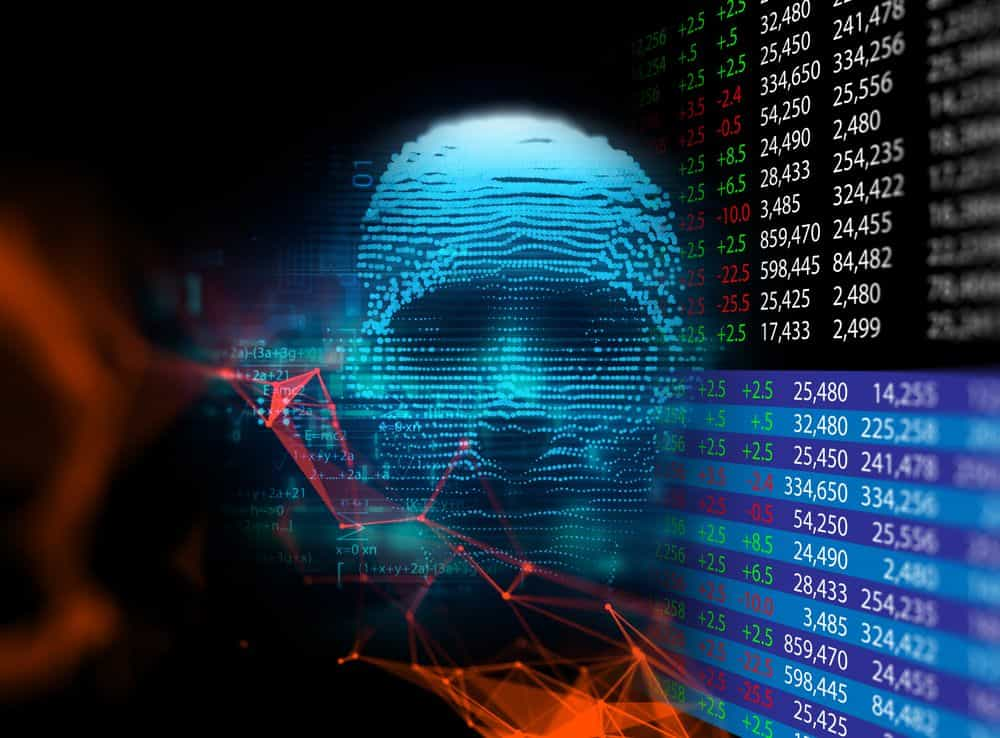
Developing Patience: The Art of Waiting
When you start trading, you may quickly discover an urge to be in the market and have live trades. That can lead to taking risks. You may feel bored or frustrated if your analysis doesn't reveal a potential trade.
After that, you lower your standards, deviate from your trading plan and strategy and hunt for something that looks like a trade.
We all do it.
Over-trading is a habit. Instead, practice the art of waiting. Create a checklist for entering a trade. For instance, the below example gives you an idea: -
- If X signal appears, check Y
- If X and Y are favourable, take the trade (pending or market order)
- Only take trades with a minimum 1:3 RTR
- Risk no more than 1% a trade
- Set an entry and exit point
- Stop loss should be no more than $X
Think like a trading sniper. Only "shoot" when the conditions are favourable and your chances of hitting the "target" are high.
Discipline: Sticking to Your Trading Plan
Many novice traders do not have a trading plan. That's comparable to sitting exams for a degree without years of study. A trading plan helps keep you on track because you have clear rules and guidelines, which reduces the brain resources required for decision-making. You can quickly refer to the trading plan if you suddenly get caught up in your emotions.
Your trading plan could be similar to a checklist. It need not be complicated. Indeed, the simpler, the better, because you are more likely to follow it.
James Clear wrote the book "Atomic Habits." One of his techniques includes habit stacking. An example could be, “When a potential market signal appears, I will spend 15 minutes analysing the charts.”
Once you master that layer, you can add another, such as, “After analysing the charts, I will assess the risk. I will not take the trade if it is more than 1% or less than 1:3 RTR.”
Discipline is king. Once mastered, it will improve all areas of your life and enable you to reach higher levels of success and mastery.
Confidence: Trusting Your Trading Strategy
It takes time to build trading confidence. Along the way, you may have incidents that knock your confidence. However, instead of thinking of losses or mistakes as failures, consider them learning opportunities.
Society has stereotyped failure as something to avoid (at all costs). When I started trading, I wish someone had told me it was okay to fail and that I would become a better trader if I embraced failure.
The definition of lunacy (apparently) is to keep repeating something that does not work. We become the moth beating itself against the light bulb. Unfortunately, I know from experience we traders often repeat bad habits, sometimes springing from the hope that a situation will magically improve.
There is no magic trading fairy coming to rescue you. What happens on the charts reflects what we do or don't do.
Embrace qualities like determination, adaptability, persistence and curiosity. If a trade loses, it doesn't necessarily mean you got your analysis wrong. The crypto market is volatile. It can sometimes feel like you're white water rafting with a bunch of sharks waiting to eat you up at the bottom of the ride.
Become curious about wins and losses. Analyse what happened, write the details in your trading journal and study the charts after the trade closes to identify any faulty cognitive biases that affected your decision.
Adaptability: Adjusting to Market Changes
Trading any financial instrument is challenging. It's a learning curve for everyone, and some never reach the end. The crypto market is particularly volatile and can often confuse inexperienced traders.
The market changes second by second. If you look at a five-minute chart, it can appear like an uptrend, consolidation in a one hour-chart and a downtrend on the daily chart. How do you decide which chart to use for analysis for more accuracy?
To establish a trend, start with the daily chart. Identify historical support and resistance zones and assess where price action is according to these levels.
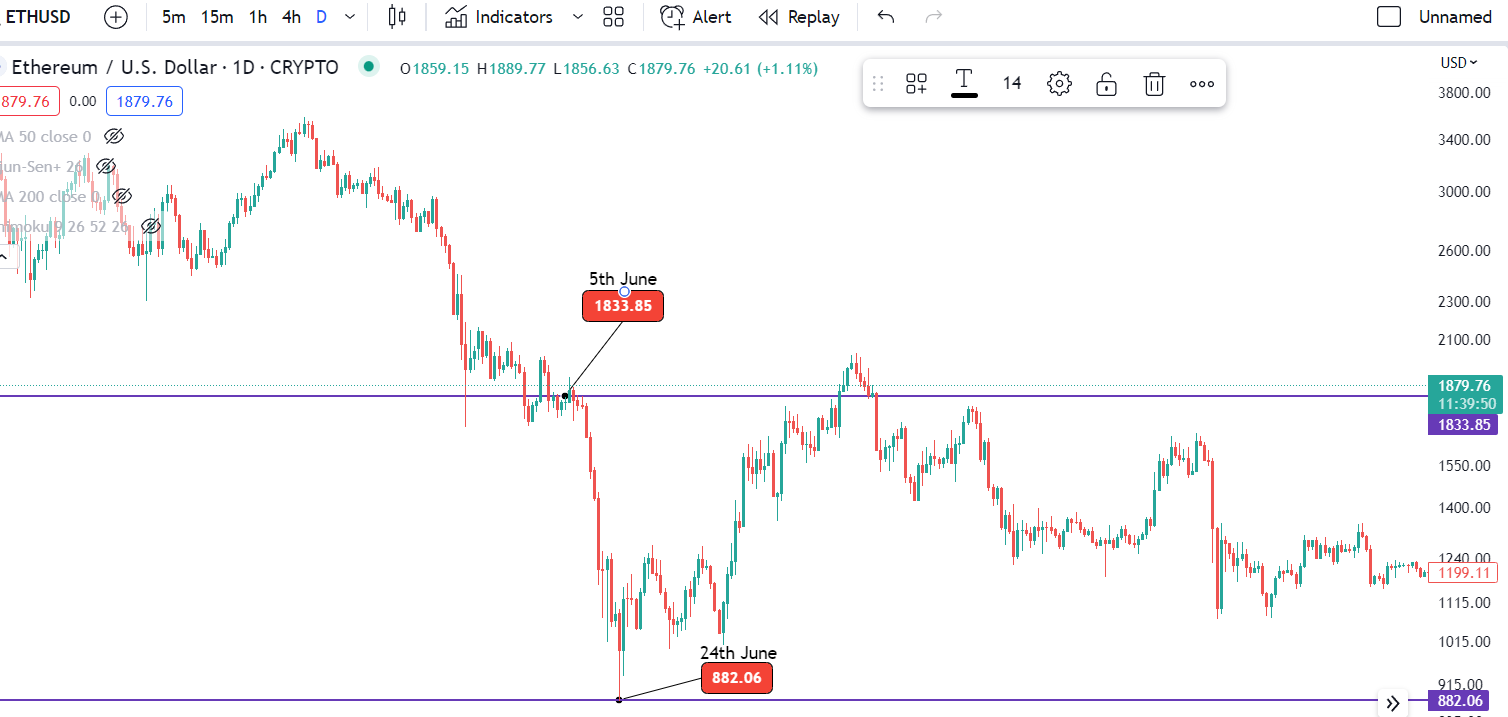
After a long period of consolidation (see the above chart), notice price shrinkage a few weeks before the ETH/USD price dropped in early June.
The ETH/USD price had stayed above this strong support zone since March 2021, touching five times before consolidating in a range.
At the beginning of June, the ETH/USD price was $1833.85; by 24th June, it closed at $882.06. It was one of the most significant price moves for Ethereum (ETH) for a long time.
As a novice trader, you could have felt biased towards the next move for ETH/USD, imagining the price bouncing off support and ascending back into the range. However, the price movement determined that the support line changed. It became a resistance level as the price retest failed to gain momentum several months later.
Adaptability to market changes is a helpful trait to develop. If you think there's a buy order, analyse the charts again from a seller's perspective. When not live trading, develop the habit of studying historical charts. Hide the right side of the chart and backtest your assessment of the market.
Part VI: Advanced Trading Psychology
There's a lot to unpack when trading cryptocurrencies, and there's always more to learn. It might help to compare it with studying for a Bachelor's degree. It's a long process of layering learning over three years or more.
Wouldn't it be worth two or three years of your life to become a professional trader and perhaps help others to learn the art of trading psychology?
Understanding Market Sentiment: The Collective Mindset of Traders
Fear and greed predominantly drive the crypto market. If there's a huge market move, with price spikes, retail traders follow the herd mentality for fear of missing out (FOMO) or FUD (fear, uncertainty and doubt) further impacts the sentiment.
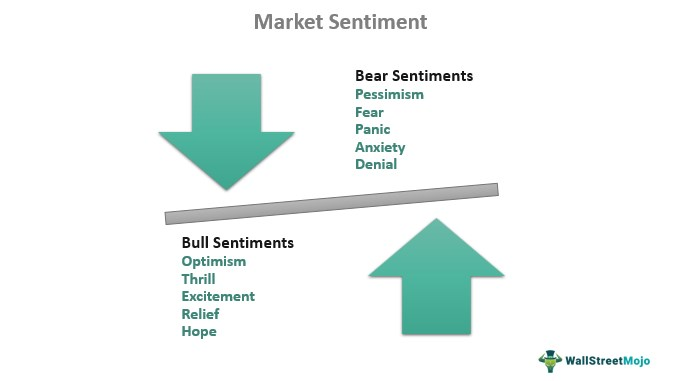
Retail traders do not influence the market price, but institutional traders, investors, and crypto whales can significantly impact the market by buying or selling at scale.
These big boys have all the power and sometimes create large market moves to activate stop loss hunting, a strategy designed to take out traders' stop losses.
When Bitcoin's price went to almost $20k by December 2017, amateurs worldwide bought it like gold prospectors. Some mortgaged their houses or borrowed money from friends and family. The media was rife with stories of Bitcoin getting to $100k, and the masses followed the sentiment.
In 2018, the price of Bitcoin started falling. At first, the sentiment held for Bitcoin to go to the moon. However, soon people began panic selling Bitcoin and made significant losses. They bought Bitcoin when it was overpriced and sold it when it became underpriced, the opposite of successful trading.
At the close of 2018, Bitcoin's price was $3,900. The mainstream media was awash with the "losers" worldwide asserting that Bitcoin was a scam, refusing to take responsibility for their actions.
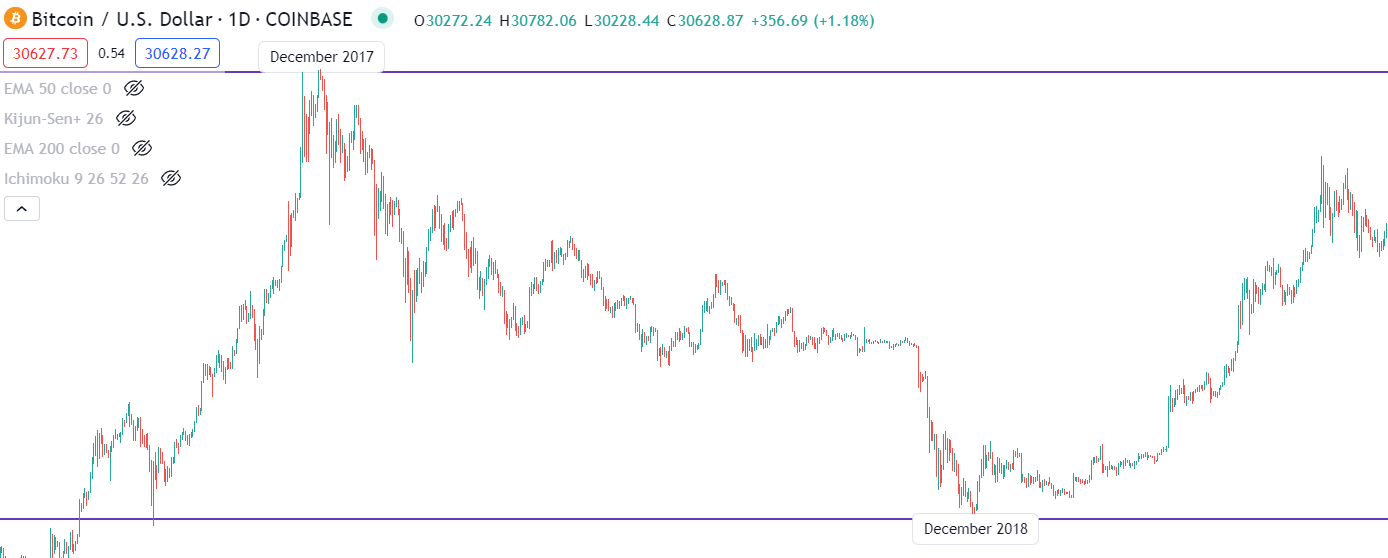
When the market gets busy, and herd mentality causes significant price spikes, that's the time to walk the dog, meet a friend for coffee and avoid trading until panic buying or selling calms down.
Avoid doing what other traders do, and become a contrarian trader.
Contrarian Trading: Going Against the Grain
Logically, you may assume that following what others do is the best move. However, some top traders suggest the opposite, meaning you buy when others sell and vice versa.
Contrarian trading is a strategy that helps move you away from herding behaviour (stimulated by fear or greed) and enables you to spot buying opportunities for cryptos selling below intrinsic value.
Contrarian trading takes skill and a lot of analysis, but it can become a super-rewarding strategy. Begin trading with a demo account until you have built sufficient contrarian trading expertise. When you go live, start with small trades and build up your confidence to go against the grain.
Algorithmic Trading: Removing Emotion From the Equation
We are emotional beings. Even if you are the most logical person, your limbic system can trigger, causing you to lose access to rational thinking. If you struggle to manage your emotions, algorithmic trading could be one answer.
What Is Algorithmic Trading?
Algorithmic trading is an automated trading method whereby you input a computer program with rules (an algorithm) for executing and exiting trades. Theoretically, a computer program with efficient instructions should outperform a human trader.
“Algorithmic trading is a method of executing orders using automated pre-programmed trading instructions accounting for variables such as time, price, and volume.”
“This type of trading attempts to leverage the speed and computational resources of computers relative to human traders. In the twenty-first century, algorithmic trading has been gaining traction with both retail and institutional traders.”
"A study in 2019 showed that around 92% of trading in the Forex market was performed by trading algorithms rather than humans."
(Source: Wikipedia)
Multiple companies offer automated trading bots, but they are only as good as they are programmed and the trader's input parameters. I tried a couple of them, but account risk was significant in both cases. At one point, my $2k balance had 45% exposure. Although the trades eventually closed for profit, I lost faith in a company that programmed a trading bot without sensible parameters for risk exposure.
It's not quite the same, but setting pending orders was more profitable for me than taking live market orders. It removed the emotion because if the market triggered my order, it would run to the exit point or close with the stop loss without my interference.
My RTR was 1:3 minimum, risking 1% of my account. My trading style was swing trading, and my strategy was trading a trending market from technical analysis. I quickly saw steady, organic growth once I removed myself from the equation.
With the speed of artificial intelligence technology, we could see a new level of algorithmic trading manifesting. For now, if you're considering automated trading, it's crucial to research the company and understand that crypto bots are tools best used in the hands of experienced traders.

The Journey to Becoming a Master Trader
Experts suggest we need 10,000 hours of practice to achieve mastery. When I consulted with professional traders, they suggested I allow two to three years of dedicated learning before I could elevate my trading to a novice level. I don't disclose this to dishearten you, but I genuinely believe a realistic understanding of potential time frames for success puts you in the right place for learning.
We've become a society wanting instant gratification because everything comes to us fast. In trading, however, success comes when you slow down and reduce expectations.
Mindset is everything. If you rely on rationality, your emotions will still catch you. My technical analysis skills were incredible, and I won hand over fist daily in a demo account. When I first switched to live trading, I lost money and confidence.
After studying neuroscience, I didn't trade for several months. When I started again, the difference was tremendous. I became detached from the outcome of my trades. I used to execute 20+ trades a week. However, once I understood how to use the psychology of trading to shape my mind, I would trade 1 or 2 trades weekly and grow my account consistently. In addition, my stress levels reduced to practically non-existent.
Take your time, soak up trading psychology like a sponge, and, in time, you will see positive differences. Have fun, and train like a boss because if you master trading psychology, crypto trading could significantly change your life.
Crypto Trading Psychology: Conclusion
You're entering the exciting world of crypto trading, and it could change your life. After reading this analysis on trading psychology, you will hopefully understand how mastering psychology is vital to your success.
In Part I, we discussed discipline, patience, decisiveness, and confidence as the core components of the psychology of trading.
Part II explored the typical reasons for trading failure, including fear, greed, hope, frustration and boredom, and we provided guidelines for overcoming these issues.
In part III, we exposed five cognitive biases that can trip up your trading and gave top tips for exposing subconscious biases so that you can trade like a pro.
Here is a quick reminder of the five cognitive biases: -
- Hindsight Bias: What happens after the trade closes.
- Confirmation Bias: The brain seeks confirmation of a belief.
- Overconfidence Bias: When Confidence Becomes Overbearing
- Loss Aversion: FOMO: The Fear of Losing Out
- Anchoring Bias: Stuck on the First Piece of Information
Social pressure affects us all, but in the trading arena, it's essential to find our path without the influence of others. Herding leads to taking random trades against your strategy and trading plan.
Rumours are often out of proportion, but you can get swept up in the collective responses. In addition, you learned that developing competitiveness with your peers is not helpful as it can lead to taking unnecessary risks.
In section V, we discussed the trader's mindset and how to develop a professional approach to trading using the power of the mind: -
- Developing Patience: The Art of Waiting
- Discipline: Sticking to Your Trading Plan
- Confidence: Trusting Your Trading Strategy
- Adaptability: Adjusting to Market Changes
In the last section, you discovered how the collective mindset of traders affects market sentiment and learnt a bit about contrarian trading, where you go against the grain by analysing and executing opposing trades to the masses. Contrarian trading is a learned skill and can help you find your edge in the crypto market.
In conclusion, we looked at algorithmic trading, whereby you use a computer to create an automated set of rules and guidelines to trigger a market order. Many automated trading bots are in the market, including Bitcoin bots, but we expect to see more powerful products become available as artificial intelligence evolves.
Frequently Asked Questions
Your state of mind affects every decision you make when trading. Understanding how your mind and body react when faced with stressful situations such as loss is essential.
Most people do not understand that our psychology links directly to our physiology. Therefore, when you become aware of your thinking, beliefs, cognitive biases, etc., you can change your physiology.
Firstly, emotional mastery begins even before you open your laptop. Ensure you feel relaxed before opening the charts. It can help to close your eyes, breathe deeply, and spend a few moments in quiet reflection (meditation).
Secondly, become aware of how you feel physically: -
- Are you sweating?
- Are your hands clenched?
- Are you leaning towards the screen?
- Are you holding tension in your body?
- Are you holding your breath or breathing shallow?
- Has your heart rate increased? (Yes, I monitored this with my Garmin watch)
If you notice any of the above physical changes, sit back in your chair and breath. Or get up, walk, and switch your mind off from trading.
As a general guide, stepping away from the screen every thirty minutes is good practice. The movement and colour on the charts stimulate dopamine, which can change your physiology and make you feel more impulsive.
There are hundreds of potential cognitive biases that can affect your trading, such as: -
- Hindsight Bias: What happens after the trade closes.
- Confirmation Bias: The brain seeks confirmation of a belief.
- Overconfidence Bias: When Confidence Becomes Overbearing
- Loss Aversion: FOMO: The Fear of Losing Out
- Anchoring Bias: Stuck on the First Piece of Information
Another one that catches traders out is the sunk cost fallacy, which is how you feel when you have invested time, money or energy into something and don't want to let it go. The sunk cost fallacy can keep you holding losing trades for too long.
Read the Coin Bureau trading psychology article several times and make notes. We all struggle with the trading mindset at first. It's normal. It takes time, practice and dedication to do the right things, become self-aware and learn from your mistakes.
Mastering the trading mindset is life-changing. It will affect all areas of your life, not just when trading. Above all, you are mastering your mind, a skill that most of the population never manages to do.
In short, market sentiment drives price action. The collective emotions of every trader worldwide underpin everything that happens on the charts.
Trading psychology refers to the mental and emotional aspects that influence a trader's decision-making process in the financial markets. It encompasses a range of factors, including emotions, cognitive biases, and behavioral patterns that can impact trading success.
Disclaimer: These are the writer’s opinions and should not be considered investment advice. Readers should do their own research.

